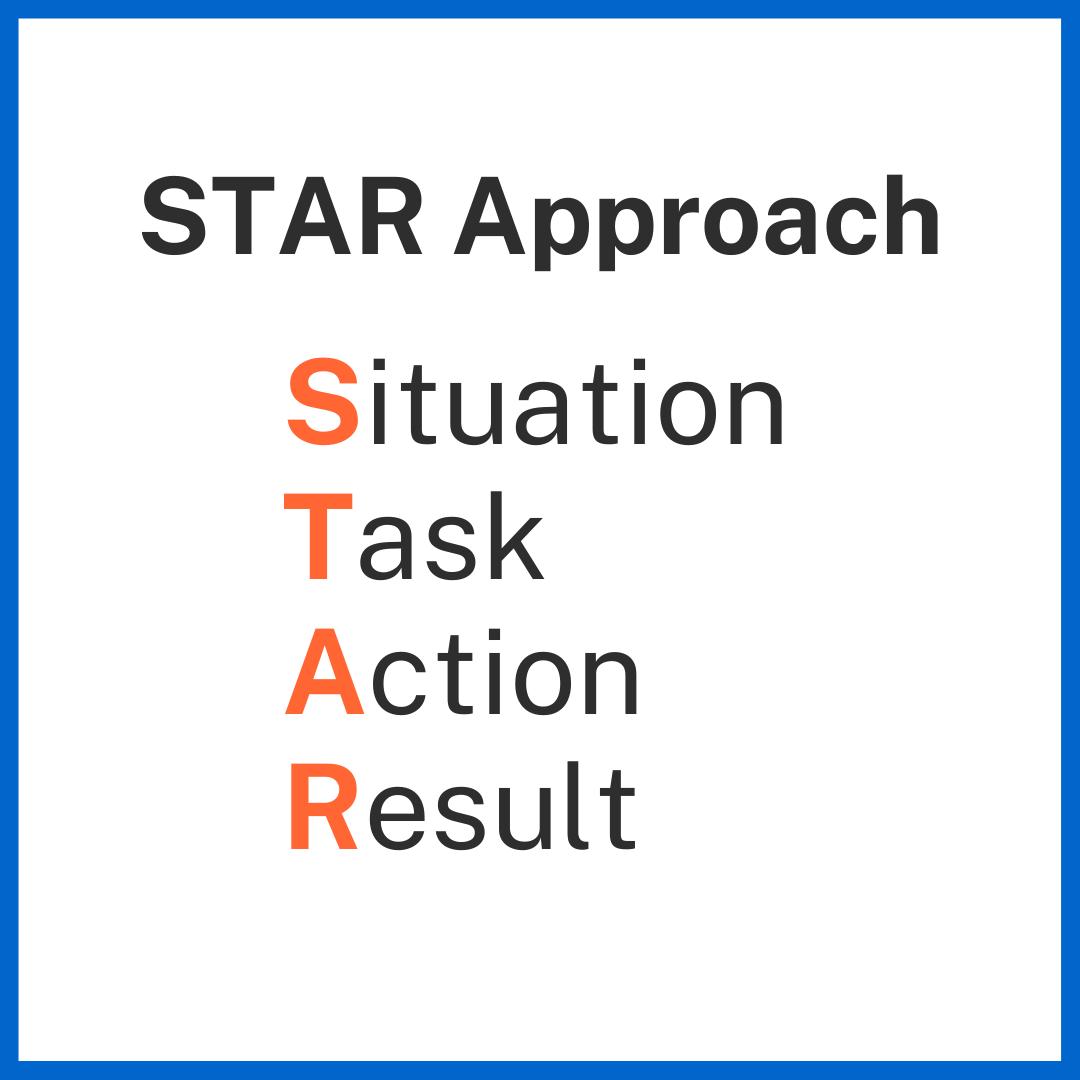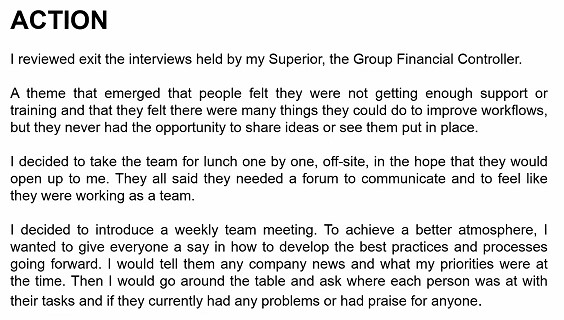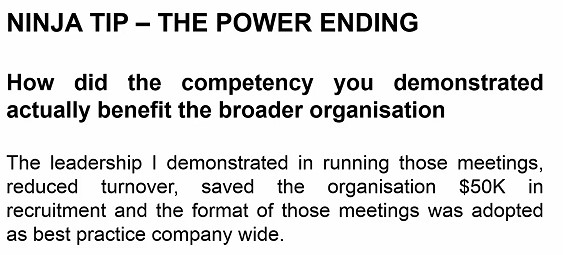Have you ever heard of STAR approach in an interview?
If you have had a few interviews, you may notice some common ways questions are asked.
It’s because there’s a special interview technique being used.
I’ll also provide you with both sample questions and answers.
Plus, because I am enormously kind, I’m going to give you a ninja tip that will put you ahead of most people in interviews!
Now, let’s find out what STAR is.
What is the STAR approach?
It’s simply an acronym that stands for Situation, Task, Action, and Result.
- Situation – What was the situation?
- Task – What was the task you were required to do in that situation?
- Action – What was the action you took?
- Result – Based on your actions, how did the situation turn out?

You can recognize a STAR example when an interviewer says, “Tell me about a time…” or “Give me an example…”
Or you can introduce a STAR example to illustrate a point that you’d like to make.
Why do interviewers use the STAR approach?
Basically, the premise is that your past behavior is a reliable indicator of your future behavior.
The interviewer wants you to give relevant and recent examples.
So relevant means, relevant to the job.
And recent is preferably in your recent or most recent career history.
There’s nothing more annoying to an interviewer if they say, “Give me an example…”
And you answer “I always do this…” or “I usually do this…”
Because then, the interviewer can actually picture you in the role.
You’re more believable if you actually did those things.
If you say things like, “I always do…” or “I usually do…” – it’s basically repeating theory.
It’s not demonstrating that you can actually do the role.
How do interviewers develop STAR questions?
Interviewers look at the job description and they look at the competencies that you’re required to demonstrate.
Examples of competencies are:
- Teamwork
- Leadership
- Communication
- Interpersonal skills
- Time management skills
- Project management skills
Then they develop questions around these competencies to allow you to demonstrate these.
For example: “Tell me about a time you needed to persuade someone to do something they did not want to do…” This question allows the interviewee to demonstrate competencies in “leadership” and “communication.”
How to prepare for a STAR interview?
So, the preparation you want to do for a star interview is to try to identify the key tasks and the key competencies you’re required to demonstrate in the role.
Then, come up with examples using the STAR approach – where you’ve demonstrated those competencies.
Example of a STAR Answer
This is an example that came from one of my clients who is a Financial Controller stepping into a new role.
The example she gave is to demonstrate her leadership skills:

So, the situation is that she started her job as a Financial Controller and there was a constant stream of Accounts Payable officers leaving pretty quickly.
Her task is to look into the situation and improve it.
When you pick examples, it’s a really great idea to pick something that stretched you or that was challenging for you.
Because quite often, you’ve got to take a lot of action to resolve it which allows you to really demonstrate the full range of skills or competencies that you’re required to do in that particular role.
Here’s the action my client took in the situation:

So in summary, these are the actions that she took to try and improve communication and stop the huge volume of people actually leaving.
For the result of her actions:

The result was that the team started to help each other and come up with solutions themselves.
As you see with this example, my client has used a very specific example and uses all four elements of the star approach: the situation, task, action, and the result.
Get Ahead During STAR Interviews
Now, I’m going to give you my ninja tip!
When giving examples, you want to open up with a power opening.
And you want to end with a power ending.
Because they’re the two things that recruiters are really going to remember.
By power opening I mean you really hone in on why the situation or problem you faced was so challenging for you.
For the power ending think about how the competency you demonstrated benefited the broader organization.
For example, with the Financial Controller, she could finish her answer off like this:

To break it down, the competency is leadership.
And the broader impact of her leadership is the saving of $50,000 in recruitment.
The fact that the format of these meetings was adopted as best practice company-wide also means that she not only had an impact on her team, but she had an impact on the company overall.
So, I really hope you found this blog post useful!
And hope you’ll be able to prepare better for your upcoming interviews.
If you would like more tips to ace your interviews, get your FREE e-book of The 7 Deadly Sins to avoid at job interviews here!
Check out the video below where I discussed the STAR approach too:

 Follow
Follow

{ 0 comments… add one now }